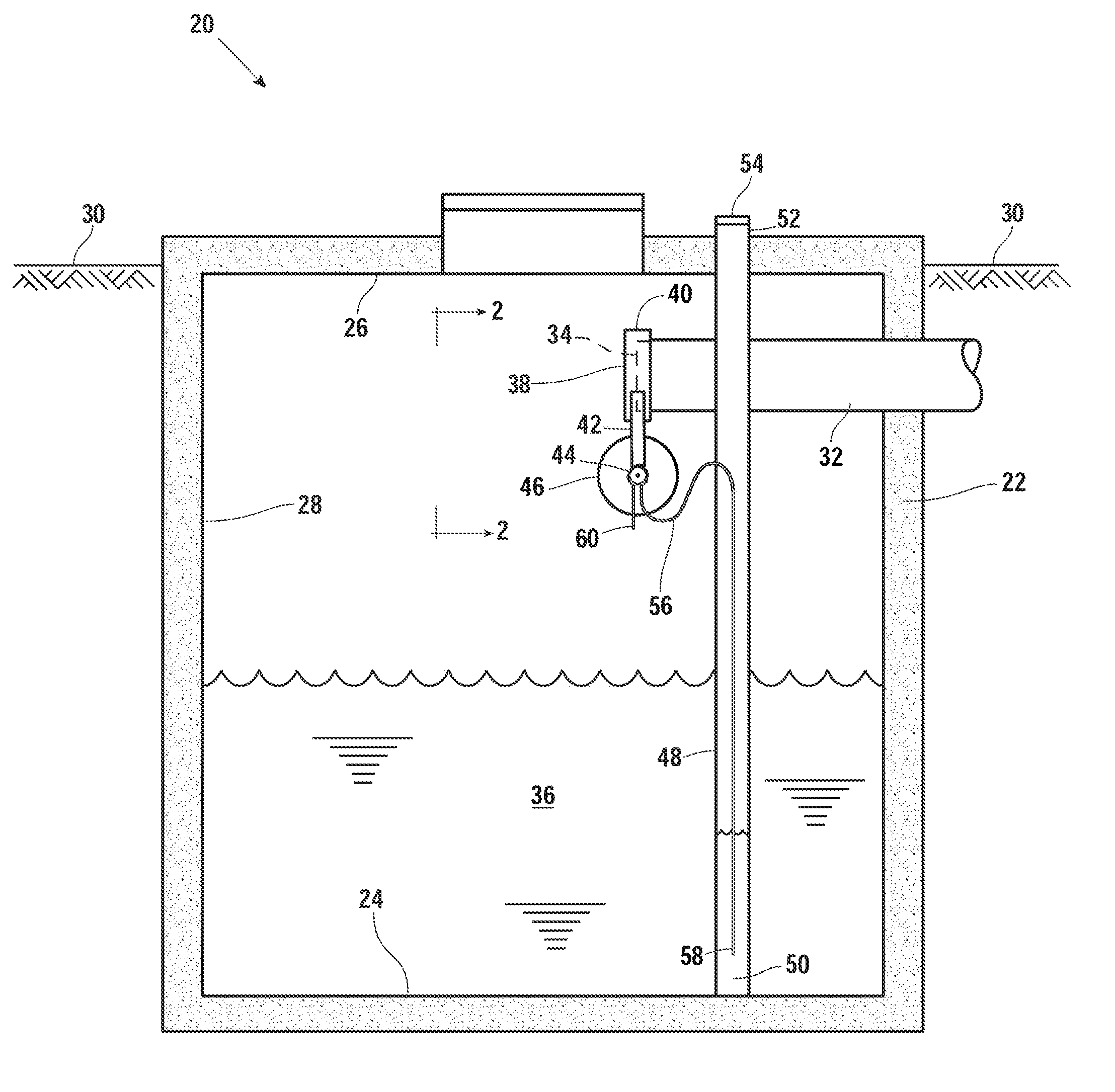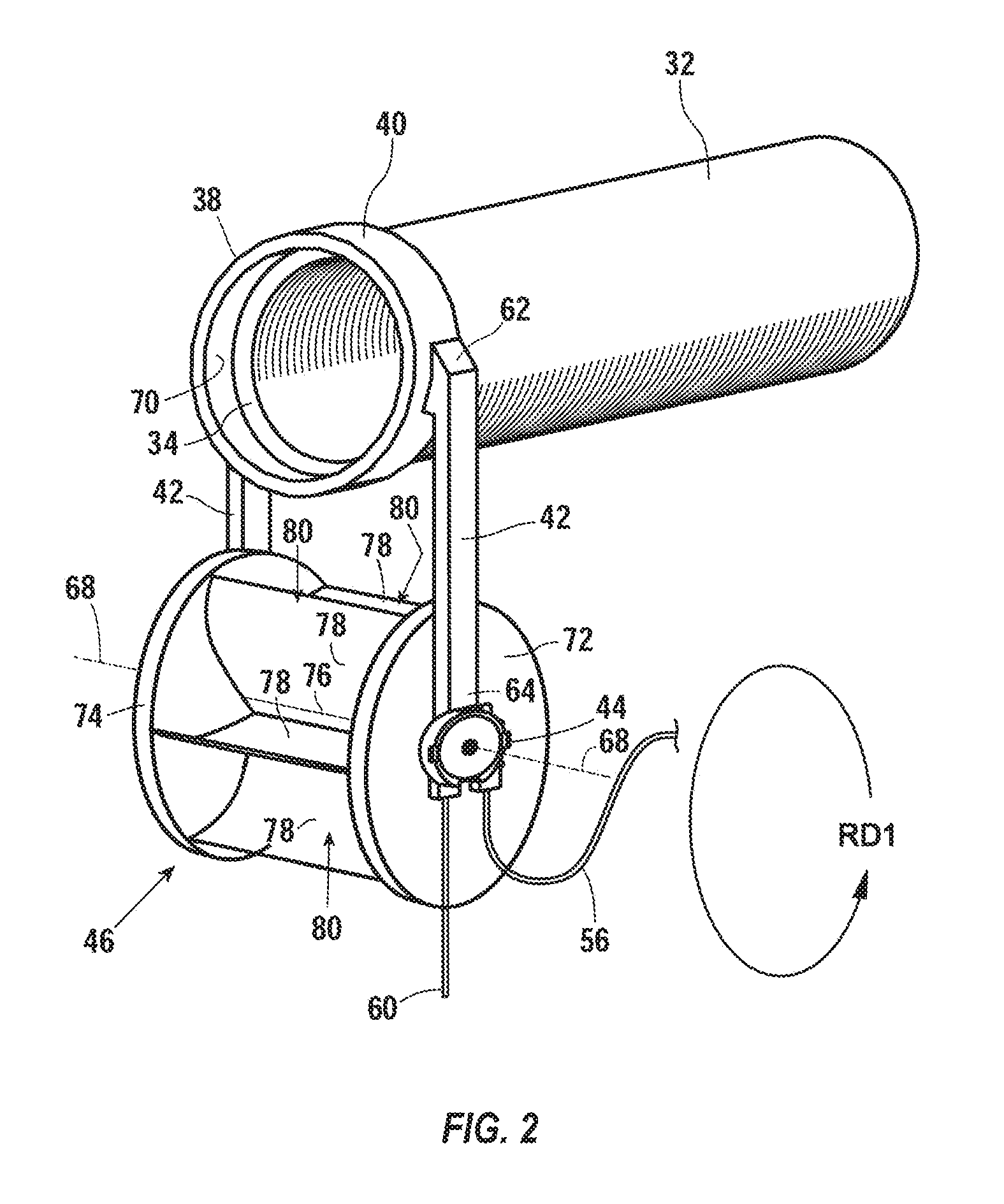Chemical Delivery System for Water or Effluent Treatment
- Summary
- Abstract
- Description
- Claims
- Application Information
AI Technical Summary
Benefits of technology
Problems solved by technology
Method used
Image
Examples
embodiment 20
[0023]FIG. 1 shows an embodiment 20 of the invention, which includes a storage tank 22 having a bottom 24, a top wall 26, and a sidewall 28. The tank 22 is located substantially below a ground surface 30. An effluent pipe 32 is connected to an effluent source (e.g., a house or a business) and has a terminal end 34 within the tank 22. Effluent 36 periodically exits the pipe 32 and accumulates within tank.
[0024]Either periodically or when the volume of effluent 36 reaches a threshold volume, the effluent 36 may be pumped from the tank 22 through a discharge pipe to a spray field. Alternatively, the effluent 36 may migrate to an adjacent chamber (not shown) through an opening in the tank 22, from which it is disbursed through piping into a nearby leach field. These and other methods of removing effluent from a septic system are well-known to those skilled in the art and are mentioned for context.
[0025]A mounting bracket 38 is attached to the pipe 32 proximal to the terminal end 34. The...
embodiment 300
[0040]FIG. 8 shows another embodiment 300, which uses pressurized fluid (e.g., effluent) flow rather than gravity flow as described with respect to the previous embodiments. Identical numbers are used to for the same components previously described with respect to FIGS. 1-7.
[0041]In this embodiment 300, a pump 302 is connected to an end 303 of a pump discharge pipe 304. At another end 306 of the discharge pipe 304, a tank discharge pipe 307 extends to a position outside the tank 22 and terminates in a sprinkler head or drip system (not shown) for dispersal into at or near the surface 30. A return line 308 is also connected to the end 306 of the pump discharge pipe 304 and has an end 310 located above the effluent 36. A ball valve 312 is connected in line within the return line 308 to allow a system maintainer to control the amount of effluent that returns to the tank 22 when the pump 302 is activated.
[0042]A housing 316 has an inlet 318 connected (e.g., threaded to) to the end 310 o...
PUM
 Login to View More
Login to View More Abstract
Description
Claims
Application Information
 Login to View More
Login to View More - R&D
- Intellectual Property
- Life Sciences
- Materials
- Tech Scout
- Unparalleled Data Quality
- Higher Quality Content
- 60% Fewer Hallucinations
Browse by: Latest US Patents, China's latest patents, Technical Efficacy Thesaurus, Application Domain, Technology Topic, Popular Technical Reports.
© 2025 PatSnap. All rights reserved.Legal|Privacy policy|Modern Slavery Act Transparency Statement|Sitemap|About US| Contact US: help@patsnap.com



